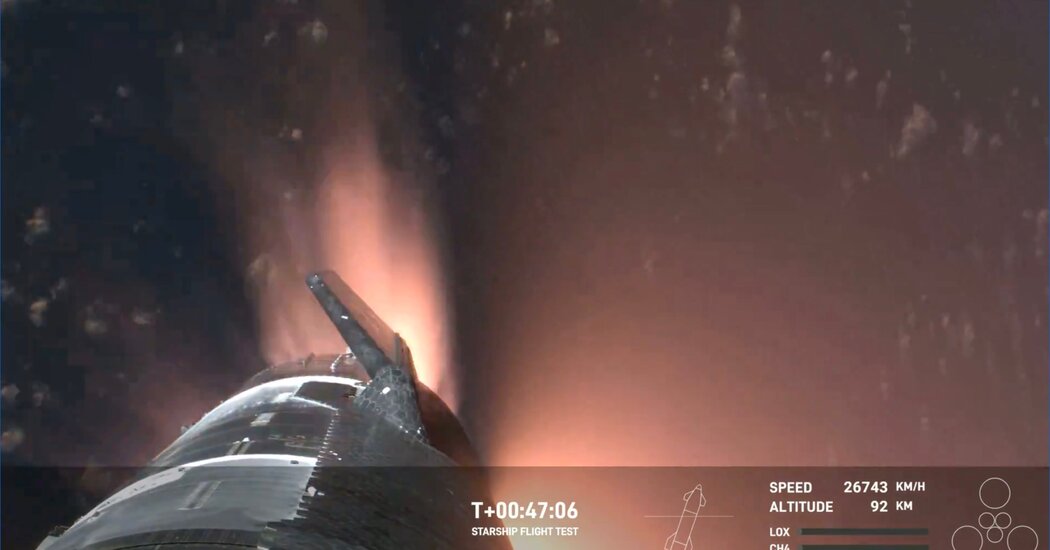Just past the 45-minute mark of the Starship vehicle’s journey through space on Thursday, something eerie happened. As it drifted high above Earth’s oceans and clouds, the spacecraft’s silvery exterior was overtaken by a brilliant and fiery orange glow.
Starship re-entering Earth’s atmosphere. Views through the plasma pic.twitter.com/HEQX4eEHWH
— SpaceX (@SpaceX) March 14, 2024
When a spacecraft re-enters the atmosphere, the air beneath it gets hot — hot enough that it turns into a plasma of charged particles as electrons are stripped away from the air molecules. The charged particles create picturesque glows, like neon signs.
But seeing this happen in nearly real-time during a spaceflight is uncommon. That plasma disrupts radio signals, cutting off communication.
Such blackouts happen, for instance, when SpaceX’s Crew Dragon capsule returns to Earth from the International Space Station with its complement of four astronauts. Mission controllers must wait with bated breath to be reassured that the spacecraft’s heat shield has held up and protected the crew during atmospheric re-entry.
Until Starship succumbed to the intense forces of re-entry on Thursday, SpaceX used its Starlink internet satellites to relay the live video feed. The Starlink satellites are in higher orbits, and sending signals upward — away from the plasma — is easier than trying to communicate through it to antennas on the ground.
But Starship wasn’t the only spacecraft in recent weeks to give us a view of plasma heating. Varda Space, a startup that is developing technology for manufacturing in orbit, had cameras on a capsule it landed on Earth on Feb. 21. Before it parachuted to the ground, its Winnebago capsule recorded a day-glow re-entry. The company retrieved the video recording from the capsule and shared it online:
